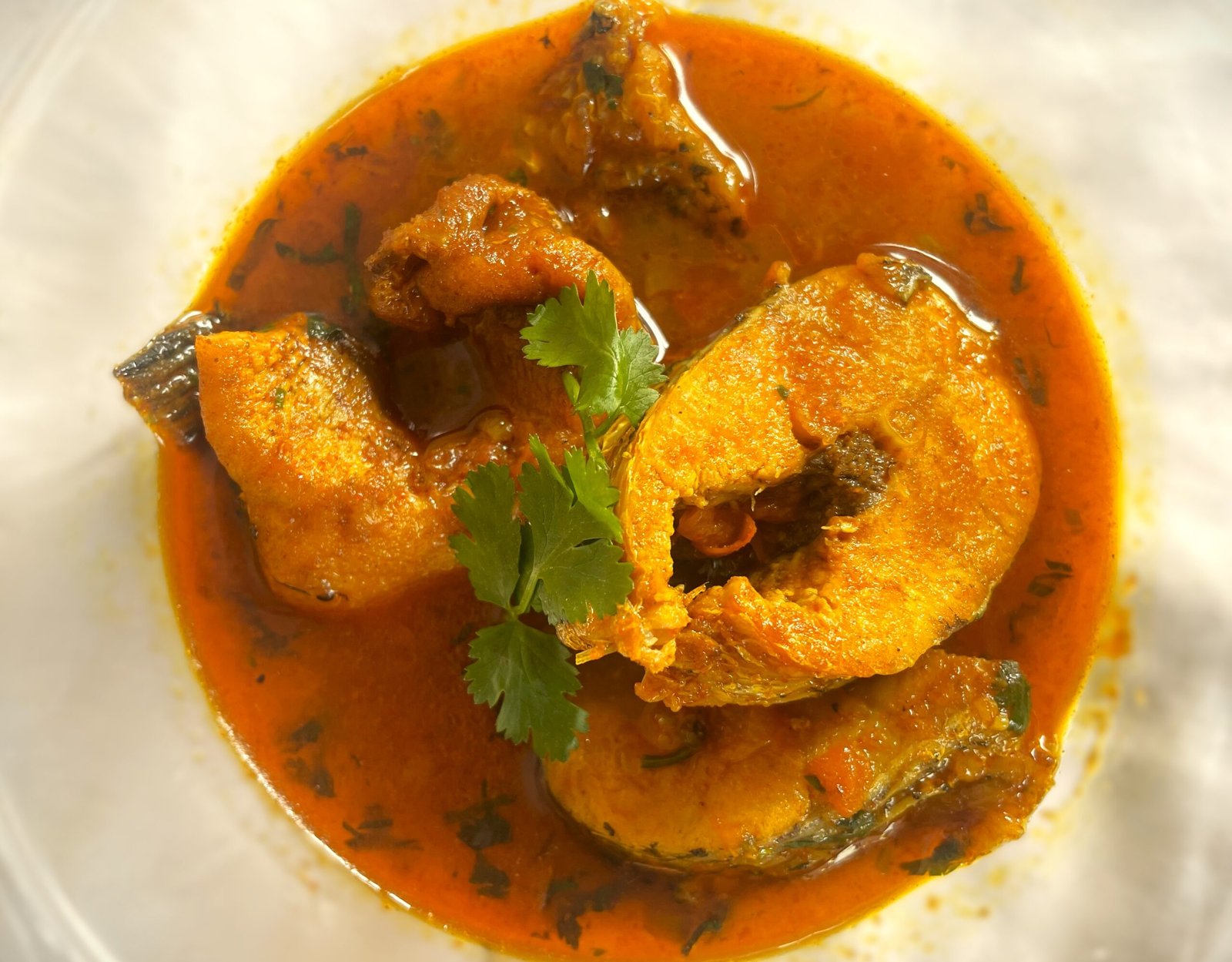
The tonguesole fish (Cynoglossus arel) draws its name from its close resemblance to the shape and colour of a tongue. It is one of several species that belong to the sole family,a type of flatfish. Usually light in colour, it ranges from a murky brown on one side to a mild pink on its underbelly. Known as naaku meenu in Tamil, or lepo/lep in Marathi, the tonguesole fish are bottom-dwelling fish found along both coasts of India. They tend to lie on the seafloor and use loose sand to camouflage themselves from predatory creatures. While this fish is widely available during a major part of the year,especially in December and January,it is often overlooked in favour of fattier, fleshier alternatives.
Flatfish, in comparison to round-bodied fish, have a more intense, meaty flavour. This implies that the tonguesole is ideal for grilling, frying, or making lightly spiced curries. Patla macher jhol, a Bengali household favourite, is made with a touch of spice to showcase the rich flavours of the fish.
| Tonguesole fish, skinned, cleaned, and cut | 5 pieces | 300-400 grams approx. |
|---|---|
| Mustard oil | 5 tablespoons |
| Green chillies, slit | 5-6 pieces |
| Onion, chopped | 1 cup | 200 grams |
| Garlic-ginger paste | 2 teaspoons |
| Tomato, chopped | ¼ cup | 50 grams |
| Turmeric powder | 1 teaspoon |
| Chilli powder | 1 teaspoon |
| Cumin powder | 1 teaspoon |
| Coriander powder | 1½ teaspoon |
| Salt | to taste |
| Water | 2 cups | 500 ml |
| Garam masala | 1 teaspoon |
| Coriander leaves, chopped | ¼ cup | 25 grams |
What You Will Need
Mixing bowls, frying pan, plates, kitchen towels/tissues, kadhai
Instructions
Cut the fish into medium-sized pieces, approximately 2 inches each.
Place the fish pieces in a bowl and rinse thoroughly under cold running water to remove any residual scales or impurities. Drain the water and set the fish aside.
Heat 3 tablespoons of mustard oil in a kadhai over medium heat until it starts to simmer. It should also release a pungent aroma and a small amount of smoke.
At this stage, gently place the fish pieces into the hot oil, ensuring not to overcrowd the pan.
Fry the fish on each side for about 3-4 minutes, or until they turn golden-brown and develop a slightly crispy crust. Once done, carefully remove the fish pieces and place them on a plate lined with paper towels to absorb any excess oil. Set this aside.
Place a kadhai over a medium flame and add the remaining mustard oil. Once hot, temper the slit green chilies, allowing them to crackle for 10-15 seconds.
Immediately add the chopped onions and sauté for 8-10 minutes while stirring occasionally. Keep stirring until they turn golden-brown and begin to caramelise.
Add the garlic-ginger paste and continue to cook for another 2 minutes while continuously stirring to prevent any chance of burning. The paste should lose its raw smell and blend with the onions.
Add the chopped tomatoes into the mixture, cooking for 5-7 minutes until they break down and meld with the onions, forming a thick base. Use the back of a spoon to help mash the tomatoes, if needed.
Reduce the heat to low and add the turmeric powder, chili powder, cumin powder, coriander powder, and a teaspoon of salt. Stir the spices into the onion-tomato mixture, ensuring they are evenly distributed. Cook the spice blend for about 5 minutes, stirring occasionally to allow the flavours to develop and the oil to separate from the mixture.
Pour in approximately 500 ml (2 cups) of water, stirring well to combine with the spice mixture. Increase the heat to medium and bring the gravy to a boil. Once boiling, gently add the pieces of fried fish back into the kadhai, ensuring they are submerged in the gravy.
Lower the heat and let the curry simmer uncovered for about 10-15 minutes. During this time, the fish will absorb the flavours of the gravy, and the liquid will gain a thicker consistency. Stir occasionally, being careful not to break the fish pieces.
Check the consistency of the curry,if it appears too thick, add a little more water to achieve the desired consistency. Adjust the salt content to your preferences if necessary.
Sprinkle garam masala and give the curry a gentle stir.
Garnish with freshly chopped coriander leaves. Serve hot with steamed rice.
Tips:
- For an enhanced flavour, marinate the fish with a pinch of turmeric and salt before frying.
- Adjust the spice level by using as many green chilies as desired.
Variations:
- Substitute tonguesole fish with other lesser-known varieties for a different texture and flavour. (Check out the InSeason Fish calendar!)
- Add vegetables like diced potatoes or eggplant to form a more substantial curry.
This recipe is contributed by the research team at InSeason Fish, which aims to diversify our consumption of seafood by promoting lesser-known, underappreciated fish that are seasonally abundant and easily accessible.
Find out more about InSeason Fish and their seafood calendar on their website.
Disclaimer: The photographed dish used in this recipe has been made with a regular sole fish.
You must be logged in to rate this recipe.

Sign in with email

